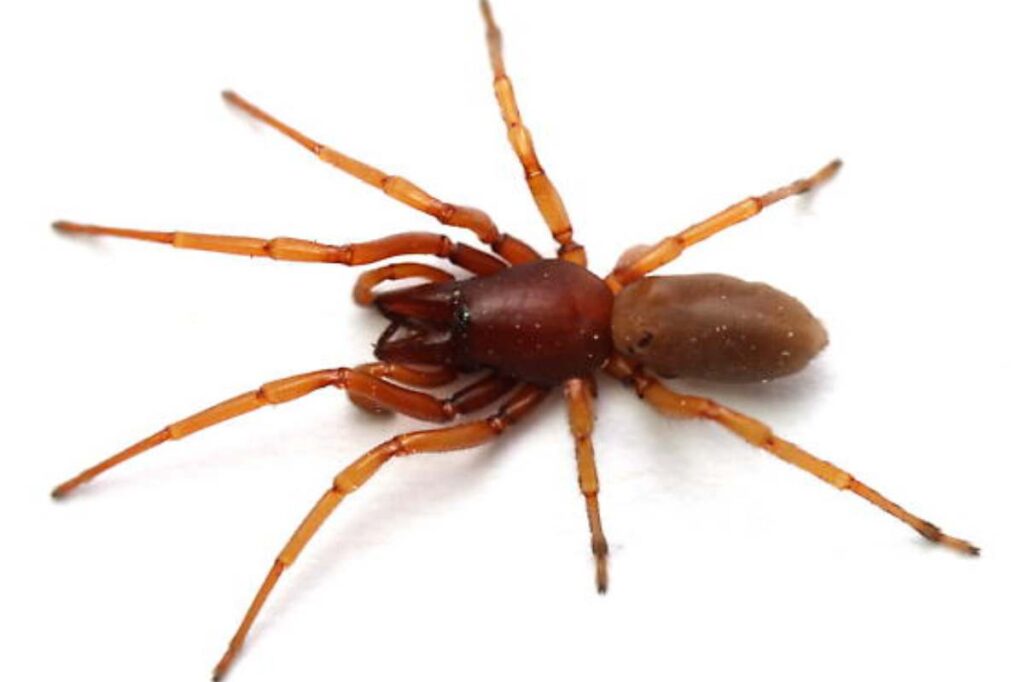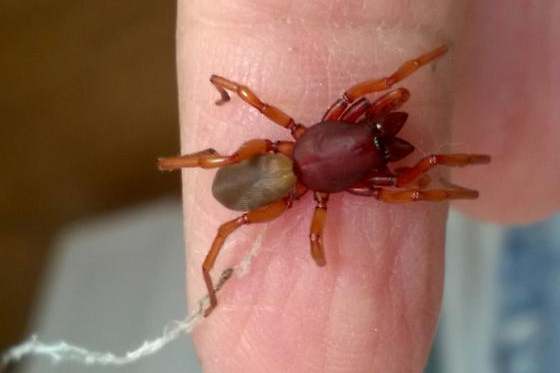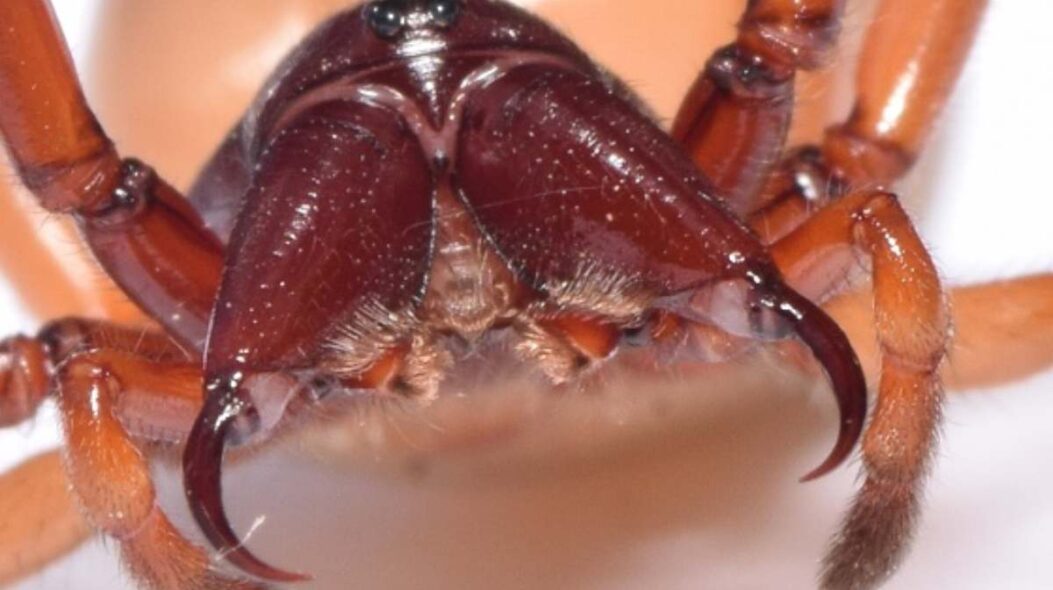Spiders might not get all the credit they deserve, but they’re actually doing wonders in our gardens. They blend into the ecosystem, munching on unwanted pests and adding to the area’s biodiversity. If you spot spiders in your garden, it’s usually a good sign that things are thriving.
Of course, it’s totally normal to wonder about how they affect your plants and your own well-being. Getting to know these eight-legged garden dwellers better can help you value their contribution and guide you in taking care of your green space.
You might also read:
What is the Australian Slater-eating spider?
The Australian Slater-eating spider (woodlouse spider, woodlouse hunter, sowbug hunter, sowbug killer, pillbug hunter), scientifically known as Dysdera Crocata, is a fascinating arachnid found predominantly in Australia. Despite its somewhat ominous name, this spider plays a crucial role in its ecosystem and has some unique characteristics that set it apart.
Appearance and Behavior
The Australian Slater-eating spider is relatively small, typically measuring around 11-14 millimetres in length. It has a compact body with a distinctive colouration that often includes shades of brown, grey, or black, helping it blend into its natural habitat. One of its notable features is its elongated front legs, which it uses to capture and hold its prey.
In terms of behaviour, this spider is specialized in preying on woodlice, commonly known as slaters or pill bugs. These small crustaceans are abundant in Australia and are often found in moist environments such as gardens, forests, and even urban areas. The spider employs a sit-and-wait hunting strategy, patiently waiting for its prey to come within striking distance.

Habitat and Distribution
The Australian Slater-eating spider is native to Australia and is found across various regions of the country, particularly in areas where its primary food source, woodlice, thrives. It prefers habitats with ample vegetation and moisture, such as leaf litter, under rocks, and in the crevices of bark. This spider is well-adapted to urban environments as well, often inhabiting gardens and parks where woodlice populations are abundant.
Feeding Habits
As its name suggests, the Australian Slater-eating spider primarily feeds on woodlice. It captures its prey using its long front legs, which it extends to grasp and hold onto the woodlice. Once captured, the spider injects venom into its prey to immobilize it before consuming it. This feeding behaviour helps regulate woodlice populations in its habitat, playing a role in the ecosystem’s balance.
Reproduction and Life Cycle
Like many spiders, the Australian Slater-eating spider undergoes a typical life cycle involving egg-laying, hatching, and maturation through several moults. Female spiders lay eggs in silken egg sacs, which they protect until the eggs hatch. The young spiders, known as spiderlings, undergo several moulting stages as they grow into adults. While specific details about their mating behaviour can vary, many spider species, including this one, exhibit courtship rituals and behaviours to facilitate reproduction.
Ecological Importance
Despite its small size, the Australian Slater-eating spider plays a significant ecological role by controlling woodlice populations. Woodlice are detritivores, meaning they consume decaying plant matter and play a role in nutrient cycling. By preying on woodlice, the spider helps regulate their numbers, preventing potential overpopulation that could impact local vegetation and nutrient cycling processes.
Conservation Status
The conservation status of the Australian Slater-eating spider is generally stable and not of significant concern. Like many spiders, it benefits from the diverse habitats available across Australia. However, like all species, its habitat could be threatened by habitat destruction, urbanization, and environmental changes. Conservation efforts that protect natural habitats and promote biodiversity are crucial for maintaining healthy populations of this and other species.

Are Australian Slater-eating spiders dangerous to humans?
The Australian Slater-eating spider (Dysdera crocata) is not considered dangerous to humans. Here are some reasons why:
Venom and Bite
While the Australian Slater-eating spider does possess venom to immobilize its prey (woodlice), this venom is not harmful to humans. The spider’s fangs are small and not designed to penetrate human skin easily. Even if a bite were to occur, it would likely result in minor irritation similar to a mosquito bite for most people. There are no documented cases of severe allergic reactions or serious medical issues resulting from a bite by this spider.
Behaviour
The Australian Slater-eating spider is not aggressive towards humans. Like most spiders, it prefers to avoid contact and will typically retreat if disturbed or threatened. Its primary focus is on hunting woodlice, and it does not see humans as prey or a threat that requires defensive action.
Habitat
These spiders are commonly found in outdoor environments such as gardens, forests, and urban green spaces where woodlice is abundant. They do not seek out human dwellings or indoor spaces for shelter or food, further minimizing potential interactions with people.
Size and Appearance
The Australian Slater-eating spider is small, typically around 11-14 millimetres in length, with a compact body and relatively delicate appearance. Its small size means it lacks the physical capability to cause harm to humans through a bite.
General Safety
As with encountering any wildlife, including spiders, it’s always advisable to avoid handling them unnecessarily. While the Australian Slater-eating spider poses no significant danger, accidental bites can occur if the spider feels threatened or trapped, though these incidents are rare and generally inconsequential.
In short, the Australian Slater-eating spider is harmless to humans and does not pose a threat. Its venom is specialized for subduing small invertebrate prey like woodlice and does not affect humans adversely. Enjoy observing these spiders in their natural habitat knowing that they contribute positively to their ecosystem without posing any risk to people.
What should I do if I find spiders in my garden?
Finding spiders in your garden is quite common and generally beneficial for maintaining a balanced ecosystem. Here are some practical steps you can take if you find spiders in your garden:

1. Observe and Identify
- Identification: Take note of the types of spiders you encounter. Most garden spiders are harmless and beneficial, preying on pests like insects that could damage your plants.
- Behaviour: Observe their behaviour to understand their role in the garden ecosystem. Spiders often help control pest populations naturally.
2. Provide Habitat
- Natural Environment: Allow spiders to thrive by maintaining diverse plants and avoiding excessive use of pesticides. Native plants and a variety of vegetation provide shelter and prey for spiders.
- Mulch and Leaf Litter: Spiders often hide and hunt in mulch and leaf litter, so maintaining a layer of these materials can create a favourable habitat.
3. Practice Tolerance
- Beneficial Predators: Understand that spiders are beneficial predators that contribute to garden health by controlling insect pests. Tolerating their presence can reduce the need for chemical pest control.
- Non-Harmful Species: Most garden spiders are harmless to humans and pets. They typically do not pose a threat and will not actively seek out human contact.
4. Control Measures
- Selective Use of Pesticides: If pest populations become a concern, opt for targeted, eco-friendly pesticides that minimize harm to beneficial insects like spiders.
- Manual Removal: If you need to relocate a spider for safety reasons, gently guide it into a container using a piece of paper and release it into a suitable outdoor area away from high-traffic zones.
5. Educate Yourself
- Spider Species: Learn more about common spider species in your region to distinguish between harmless garden spiders and potentially harmful ones.
- Behavioural Insights: Educate yourself on spider behaviour to feel more comfortable with their presence and understand their role in maintaining garden biodiversity.
6. Safety Tips
- Personal Safety: While most spiders are harmless, wear gloves when gardening to protect against accidental bites or stings from other insects.
- Children and Pets: Teach children and pets to observe spiders from a safe distance and avoid handling them without supervision.
7. Seek Professional Advice
- Expert Consultation: If you’re unsure about a spider species or have concerns about its presence, consult with Expert Pest Control or entomologists who can provide guidance tailored to your specific situation.
Create a garden that’s friendly to insects and spiders to support a healthy ecosystem. This helps with sustainable gardening and respects the beneficial role of these arachnids.
Conclusion
So, to sum it up, having spiders in your garden can actually be a good thing for your plants and the whole environment. By watching what they do, giving them good places to live, and being cool with them, you can make your garden a place where natural bug control and lots of different plants and animals can happen.
Just remember, most garden spiders are harmless to people and help keep things in balance. If you’re into these helpful bug-eaters, you don’t have to use strong bug sprays, and over time, your garden will get better at taking care of itself. Next time you see a spider doing its thing, think of it as a sign that your garden is totally thriving.
